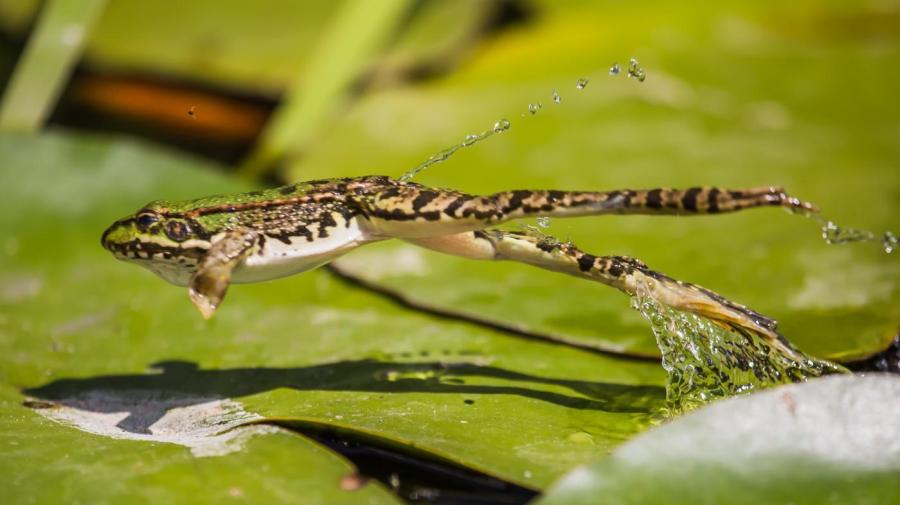How Has a Frog Adapted to Its Environment?

Different frogs have different adaptations, but generally frogs have eyes on the top of their head for seeing out of the water, a long, sticky tongue for capturing prey such as insects and sensitive skin for absorbing water and oxygen. According to BioWeb ULAW, many frogs such as the Northern Leopard Frog have powerful legs that help them adapt to their environment both by jumping in a zigzag pattern to avoid being eaten on land, and also for swimming skilfully enough to catch their own prey in water.
Many frogs, with the Northern Leopard Frog being an example, have skin with camouflaged patterning as well. In this case, that includes brownish-green coloring that is perfect for blending into wetlands. Frogs also often have a network of webbing between their toes that helps them make the transition between walking on land and swimming in the water. The webbing provides resistance that frogs use to push on the water and move through it quickly and efficiently.
Additionally, frog skin produces a mucus that keeps their sensitive skin from becoming dry or receiving damage in other ways when they are out of the water. Frog eyes also allow them to sneak up on animals on the surface.





